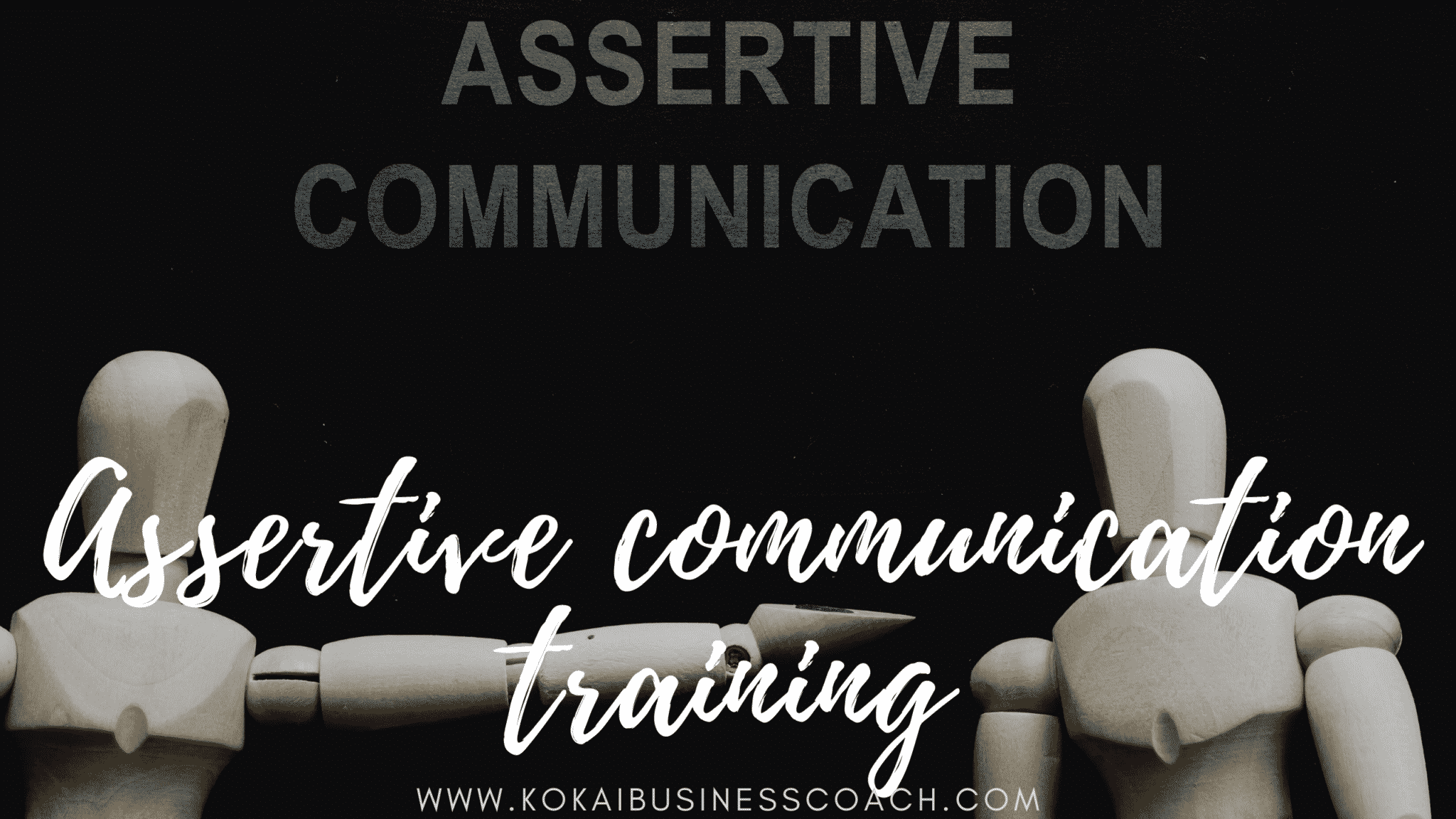Assertive meaning (Part 1)

Assertiveness is the skill of effective communication and negotiation. Being assertive means being able to stand up for what you believe is right, ask for what you want. You can say no to what you don’t want in a way that’s confident, calm, and respectful, polite but firm.
I tried to create this guide to sum up what assertiveness means and how you could be more assertive in your own life.
As a business coach, the concepts and techniques in this article are the same ones I help my clients to develop their communication skills in my professional work.
Assertive meaning and the 4 Communication Style
Assertiveness is more than a way of communicating. But assertive communication is a good place to begin to understand the more general concept.
There are 4 styles or types of communication:
-
-
Passive Communication
-
Aggressive Communication
-
Passive-Aggressive Communication
-
Assertive Communication
-
Whenever we communicate with people—consciously or unconsciously—we’re using one or more of these styles. Let’s briefly go through each and describe what it looks like and where it comes from.
a.) Passive Communication
The passive style of communicating is about avoiding conflict. It often takes the form of “going with the flow,” consistently giving into other people’s requests and demands, and avoiding expressing our own desires and preferences:
“I’m weak and unable to take care of myself.”
Take on another new project and work on it all weekend? Yeah, of course, I can do it, boss!
Passive communicators will often: fail to assert for themselves and allow others to deliberately or inadvertently infringe on their rights, fail to express their feelings, needs, or opinions and exhibit poor eye contact and slumped body posture..
People with a passive style of communication often look extremely busy and active because they’re constantly rushing around and working hard to take care of everyone else’s requests of them.
b.) Aggressive Communication
The aggressive style of communicating is the reverse of the passive style. Rather than doing whatever is asked of us by others, when we use the aggressive style we try to force others to do what we want, even if it’s at the expense of their own wishes.
Aggressive communication is a style in which individuals express their feelings and opinions and advocate for their needs in a way that violates the rights of others. Thus, aggressive communicators are verbally and/or physically abusive.
In the aggressive style the communicator tries to take an unreasonable amount of control over other people’s lives.
The aggressive communicator will say, believe, or behave like:
“I’m superior and right and you’re inferior and wrong.”
“I’m loud, bossy and pushy.”
“I can dominate and intimidate you.”
“I can violate your rights.”
“I’ll get my way no matter what.”
“Get out of my office and don’t come back ’till you’ve got something half-way intelligent to say!”
A consistently aggressive style of communicating is almost always a response to feeling afraid or threatened on a deep level. Just like many playground bullies act the way they do in order to feel powerful and compensate for the bullying and fear they experience at home, most adults who use an aggressive communication style are acting out of a sense of fear and helplessness.
And while aggressive communication can feel empowering in the short term, the long-term results are never satisfying and often make those feelings of insecurity worse.This styles is ruining the relationship, too.
c.) Passive-Aggressive Communication
Passive-aggressive communication is a combination of the passive and aggressive styles. It’s usually an attempt to get our way or express our frustrations and dissatisfactions while simultaneously avoiding responsibility for the consequences. It’s a style in which individuals appear passive on the surface but are really acting out anger in a subtle, indirect, or behind-the-scenes way. People who develop a pattern of passive-aggressive communication usually feel powerless, stuck, and resentful – in other words, they feel incapable of dealing directly with the object of their resentments. Instead, they express their anger by subtly undermining the object (real or imagined) of their resentments.
Passive-aggressive communicators will often:
- mutter to themselves rather than confront the person or issue
- have difficulty acknowledging their anger
- use facial expressions that don’t match how they feel – i.e., smiling when angry
- use sarcasm deny there is a problem
- appear cooperative while purposely doing things to annoy and disrupt
- use subtle sabotage to get even
Practices of passive agressive people
Gossip—talking badly about people behind their back—is a form of passive-aggressive communication where we vent or undermine someone while trying to avoid the consequences of doing it directly.
Sarcasm is a common form of passive-aggressive communication that lets us “get a jab in” at someone but avoid taking the blame because it was “just a joke.”
Intentionally doing a task or project poorly so that we won’t be asked to do it again in the future is passive-aggressive since it allows us to get what we want and avoid the discomfort (or possible rejection) that comes from asking for it.
Passive-aggressive communication only works in the short term, but almost always leads to poor results in the long run. The people around us eventually become so frustrated and upset with us that it can cause major relationship strife and loss.
And because people who regularly use the passive-aggressive style understand that they’re not being totally honest in the way they relate with people, chronic guilt can build up and become crippling.
d.) Assertive meaning: communication
Assertive communication means that we politely, clearly, but firmly and respectfully ask for what we want and say no to what we don’t want.
“This report still needs a lot of work. Why don’t you take a closer look at it with Tom and get back to me in a couple days?”
“Hey boss, I’m having some trouble collaborating with Julie on the Johnson account. I think it might help if we had more clearly defined roles and objectives on the project”.
Many people mistake the directness of assertive communication for aggressive communication. Usually, because they were trained early on in life to be overly accommodating or deferential.
These people hear the term assertiveness or imagine themselves being assertive, and it feels pushy, rude, or somehow disrespectful. This is because they don’t have much experience with the assertive middle ground between passive and aggressive.
Assertive meaning is almost always the most effective way of interacting with people because it’s A) an honest expression of how you feel and what’s important to you, but also B) respectful of others.
In other words, assertive communication means respecting yourself and other people in the way you communicate.
The assertive communicator will say, believe, or behave in a way that says. He has confidence, he can speak clearly, honestly and to the point. The assertive person admits he cannot contrrol other but can control himself. An assertive person takes responsibility of getting his needs and respect the rights of others.
To be continued…
If you are interested more details, please ask for a free consultation with me or apply for my assertive communication training.

